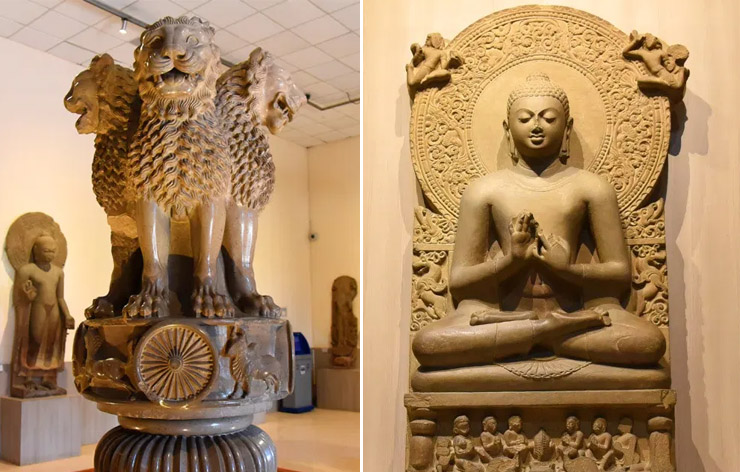□ Preaching Buddha / 초전법륜상

아소카의 기둥 (사르나트 사자상)
아쇼카의 기둥은 기원전 268년부터 232년까지 인도를 다스렸던 아쇼카 대왕의 칙령이 새겨진, 혹은 아쇼카 대왕의 치세 기간 동안에 돌로 제작되어 세워진 기둥으로 인도 대륙 전역에 걸쳐 흩어져 있다. 인도에서 발견된 가장 오래된 석조 조각 유물 중 하나로써 인도 역사의 중요한 건축물이자, 마우리아 양식을 상징하는 기념물이기도 하다. 기원전 3세기 이전 인도에서는 건축물의 주요 재료로 석재보다는 목재를 주로 사용했으며, 페르시아와 그리스(헬레니즘 제국)와의 상호작용에 따라 인도에서도 석재가 채택되었을 것으로 생각된다. 이 아쇼카의 기둥의 꼭대기 부분을 장식한 사자 모양의 장식을 그래픽으로 표현한 디자인이 1950년에 인도 공화국의 국장(國章)으로 채택되었다.
[자세히보기]출처 : Wikipedia
Pillars of Ashoka
The pillars of Ashoka are a series of columns dispersed throughout the Indian subcontinent, erected or at least inscribed with edicts by the Mauryan Emperor Ashoka during his reign from c. 268 to 232 BC. The pillars of Ashoka are among the earliest known stone sculptural remains from India. Only another pillar fragment, the Pataliputra capital, is possibly from a slightly earlier date.It is also adopted as national emblem of India. It is thought that before the 3rd century BC, wood rather than stone was used as the main material for Indian architectural constructions, and that stone may have been adopted following interaction with the Persians and the Greeks.
[Learn more]Source : Wikipedia










 HOME
HOME


 0
0




